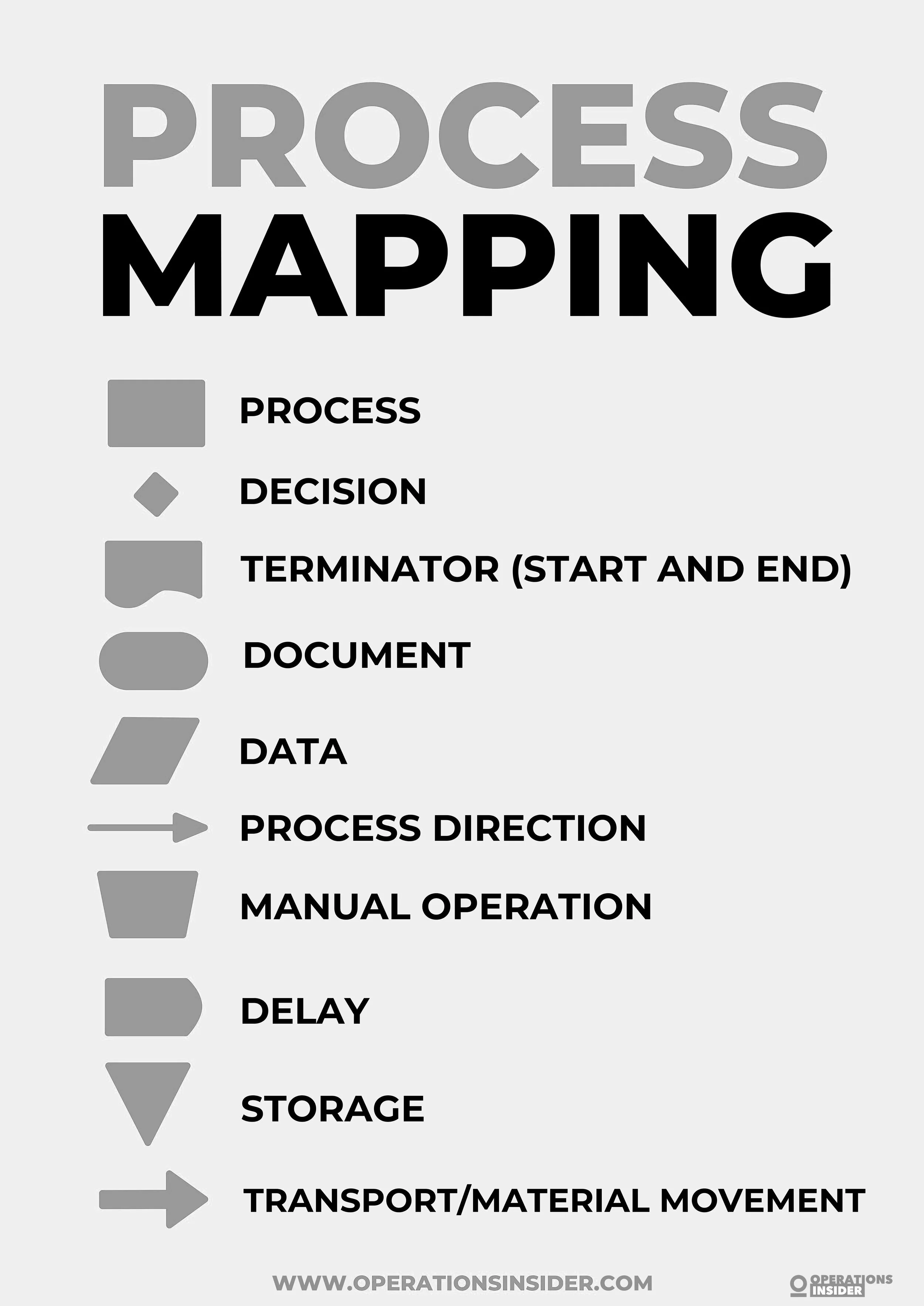
GENERAL MANAGEMENT
Process Map
The Process Map is a visual representation of a sequential process flow. Typically used to visualize a process in the beginning of a Kaizen session but also applied as a tool for problem solving.
The Process Map is a visual representation of a sequential process flow. Typically used to visualize a process in the beginning of a Kaizen session but also applied as a tool for problem solving.
Having a Step-by-Step Guide on process mapping can be beneficial, this is the reason for the following section where we try to give you some guidance.
Process Mapping describes nothing less than creating a workflow diagram with the target of getting a clear understanding of how a process itself and its sub- or pre-processes work.
Mapping
By mapping business processes you have a great way to understand all process steps along the workflow. With process maps, specially your upper-level mgmt. can easily understand how processes are functioning and what it takes to run through the complete workflow.
Of course the main question is what to use Process Maps for?
In general process mapping is carried out to establish organization wide standards or procedures. There are examples out there in the industry that use process maps as standard work instructions. The downside by doing so is that you will miss a lot of KPIs by this approach - and we all know, if you can not measure you can not control. This is the reason why process mapping usually is done in the beginning of setting up a new workflow, it supports the management by visualizing of what and how it should happen.
You might have come across Business Process Management (BPM) software. Generally speaking it is just software the helps you to track the lead time to complete a process and to identify bottlenecks. By this you then have the chance to implement standards that tackle automation of work.
So let us have a look step by step. In the following we will show you the general steps of mapping out business processes.
1 Set the scope
Be specific where your process starts and where does it ends. It might be absolutely reasonable that some process have more than one possible end, therefore it is crucial to map down all possible outcomes.
2 Write down all activities that are driving the process
As you already know where everything starts and ends it’s time to fill the gap in between. It is up to you how detailed you want to describe it. Just make sure that is is formulated as an action item.
3 Get the actions in order
Great work, you determined all action items that are necessary to run your process from start to end. Now it is time to set them in order. Each action has to trigger a downstream process step, otherwise you have to question the action item itself, do you really need it if there is nothing happening afterwards.
4 Use Symbols
Just make sure that you are using correct symbols to map your process steps:
If the process you’re mapping is a closed loop, make sure that it takes you back to the beginning.
5 Systems Modeling
Use the systems modeling approach to draw your flowchart and map your processes. It helps you determine what information should be added and where.
6 Double Check
Once you’re finished, let it rest for a day, step back and make sure that the process you have drawn is complete and that it contains all relevant information. Add the date and an appropriate title so you can keep track with upcoming versions of it.
7 Review and Improve
Once your process is mapped, have a look (GEMBA) and see if the process is running as it should run in real life. Are the people involved following the ideal state of workflow? Are there any unnecessary steps that can be crossed out? Making continuous improvements is key to run efficient and target-oriented processes.
If you want to see process mapping in a high level approach, go have a look at quality professionals working according to the Six Sigma principles. Following the business process architecture, it sees all processes as a series of cross-functional flowcharts with a different level of complexity, reaching from 0 as almost none details up to 4 being very detailed.
Having the lean manufacturing glasses on Value Stream Mapping (VSM) takes best practices and is used to improve the flow of materials and information that are required to deliver a product or service to a customer, that is willing to pay for. VSM is an end-to-end approach and has its strengths when it comes down to cut lead times or simply implement lean manufacturing principles.
No matter what - when you start mapping your process, think about upfront what the target state of the map should be. By this we also mean the format, that it suit the next steps, such as usage in different software.
All together it is always a good advice and fast help to write down your process steps on sticky notes and arrange them in the right order on your office wall - you might also use the affinity diagram upfront, to place everything in their natural order.
This is the good old-fashioned approach you don’t need anything for, just a pen and sticky notes.
Stay connected












Ad
We want information fast and in a nutshell. We from OI recommend Blinkist* - because it’s simply the best.
* = Affiliate Link












